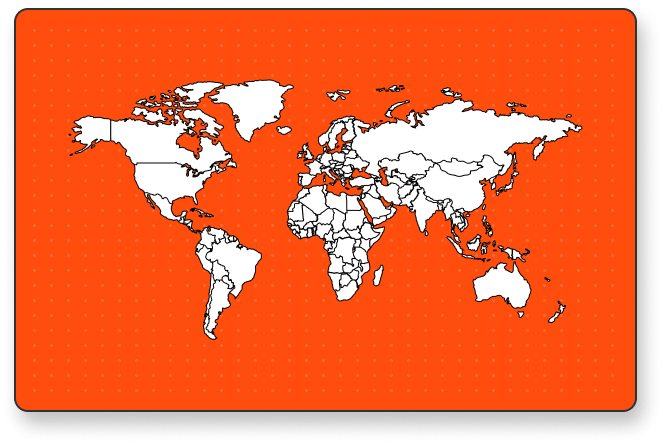Brokerage Business
8 minutes read
Aug 28, 2025
Brokerage Business Plan: The Ultimate Guide to Building a Profitable Brokerage
Your brokerage business plan is the foundation for building a successful trading platform. It records your business strategy, revenue-generating models, and growth projections, as well as helping you raise capital and meet regulatory compliance. The global FinTech market will be worth a staggering $305.7 billion by the end of 2025, with a compound annual growth rate (CAGR) of 22.9% from 2020, so the time to enter the market is now.
Understanding the Present Brokerage Environment
Market Opportunities in 2025
The fintech brokerage sector presents unparalleled business opportunities. Barriers to entry have fallen significantly because of innovative technology solutions and regulatory sandboxes that allow innovation to thrive.
Some of the rising market drivers are:
- Increased participation by retail investors
- Demand for commission-free trading
- Mobile-first trading environments
- Cryptocurrency integration needs
- AI-based investment advisory solutions
Competitive Advantages You Can Leverage
Your brokerage company can stand out by adopting several distinct strategic directions. Investors today demand sites that offer more than basic trading functionality.
Consider these competitive advantages:
- Zero-commission models earn revenue from receiving payment for order flow
- Social trading functionality to monitor profitable traders
- Educational content hubs providing market insights and trading tutorials
- Support for multiple assets in stocks, forex, crypto, and commodities
- Advanced analytics software powered by artificial intelligence
If you’re considering specializing in specific markets, our guides on how to open a forex brokerage and launch your own crypto brokerage provide detailed market-specific strategies.
What are the Core Components of Your Brokerage Business Plan?
Executive Summary
Your executive summary must be a representation of your vision for your brokerage. This section will determine whether investors will continue reading your whole business plan.
Include important details such as:
- Mission statement defining the core purpose of your brokerage
- Target market demographics and size
- Unique value proposition that sets you apart
- Key financials like projected revenue and timeline to profitability
- Funding requirements with purposeful use of capital
Market Analysis
Comprehensive market analysis forms the foundation of your business plan. You need to be aware of your target market and competitive landscape.
Possible target market segmentation includes:
- Mobile-first experience-seeking Millennial traders
- Gen Z social trading and cryptocurrency-interested investors
- High-frequency traders requiring high-speed executions
- Institutional clients requiring complex risk management facilities
- International markets requiring multi-jurisdictional support
You can also adopt a competitive analysis framework, identifying:
- Direct competitors offering similar services
- Indirect competitors like robo-advisors and traditional brokers
- Pricing schemes and charges
- Technology infrastructure features
- Customer acquisition patterns
Service Offerings
Your service portfolio has to fit market demand while capitalizing on your core competencies. FinTech firms are inclined towards inclusive finance models that enable customers to gain proper access to a wide range of financial services.
Core trading services include:
- Equity trading with live market data
- Forex markets offering major and exotic currency pairs
- Cryptocurrency exchange with support for popular digital assets
- Options and futures for advanced trading strategies
- Ability to access ETFs and mutual funds for diversified investments
Value-Added services include:
- Portfolio management tools
- Risk assessment algorithms
- Educational webinars and courses
- Market research and analysis
- Copy trading functionality
Technology Infrastructure
Your technology stack powers user experience, scalability, and operational efficiency. Modern brokerages require solid, secure, and scalable infrastructure.
Key technology components include:
- High-volume transaction-capable trading engine
- Order management system for efficient trade execution
- Risk management platform with real-time monitoring
- Customer relationship management for client onboarding and support
- Compliance and reporting tools for regulatory requirements
Other general security considerations to factor in include:
- Multi-factor authentication systems
- End-to-end encryption protocols
- Security audits and penetration testing are regularly
- General disaster recovery and backup process
- Cyber insurance coverage
Regulatory Framework and Compliance Strategy
Licensing Requirements by Jurisdiction
Proper licenses are required for lawful operation, and different jurisdictions require different requirements and timelines to obtain a brokerage license.
Major regulatory bodies you need to be aware of are:
- SEC and FINRA for US operations
- FCA for United Kingdom markets
- CySEC for European Union access
- ASIC for Australian clients
- FSA for Japanese market entry
Licensing is easy when the following steps are taken:
- Provide a detailed business plan to regulators
- Show sufficient capital requirements
- Establish the qualifications of the management team
- Set compliance procedures
- Background checks for major personnel
Compliance Management System
Your compliance framework guarantees ongoing regulatory compliance. This system protects your business from legal issues and maintains client trust.
Major compliance areas include:
- Know Your Customer (KYC) client onboarding processes
- Anti-Money Laundering (AML) surveillance and reporting
- Market conduct rules governing trading practices
- Data protection legislation, such as compliance with GDPR
- Guidelines for financial reporting in terms of transparency
Revenue Models and Financial Projections
Diversified Revenue Streams
Successful brokerages make use of multiple revenue streams to diversify and reduce dependence on single revenue streams. Your business plan must have realistic revenue projections based on available market data.
Primary revenue sources include:
- Percentage-based or per-transaction trading commissions
- Spread markups on forex and cryptocurrency transactions
- Order flow payments from market makers
- Premium subscription charges for advanced features
- Margin lending interest on leveraged traders
Secondary revenue streams include:
- Investment advisory fees
- Educational course sales
- White-label platform licensing
- Market data subscriptions
- Affiliate marketing commissions
For entrepreneurs interested in alternative business models, consider starting a prop firm that offers different revenue structures and risk profiles.
Financial Projections and Milestones
Your financial model must show a path to profitability while accounting for startup costs and regulatory capital requirements.
Year 1 Financial Objectives:
- Achieve break-even on operating costs
- Onboard 10,000+ active traders
- Earn $2M+ gross revenue
- Maintain customer acquisition cost under $150
- Capture 15% market share in the target segment
Three-Year Growth Strategy:
- Expand to 100,000+ registered members
- Enter three new markets
- Launch institutional trading services
- Achieve 25% year-over-year revenue growth
- Maintain 80%+ customer retention
Marketing and Customer Acquisition Strategy
Digital Marketing Strategy
Your strategy for acquisition needs to leverage digital channels where your target audience is actively engaged. New traders research and compare websites online before committing.
A successful content marketing strategy must include:
- Training blog posts on trading techniques and market analysis
- YouTube videos explaining platform usage and trading basics
- Webinar series with market professionals and profitable traders
- Social media engagement on Twitter, LinkedIn, and online trading forums
- Email marketing campaigns lead leads through the decision phase
You can also maximize paid advertising channels through:
- Google Ads based on keywords surrounding trading
- Facebook and Instagram campaigns for younger age segments
- LinkedIn ads for professional traders and investors
- YouTube pre-roll ads on finance channels
- Podcast sponsorships in investment TV shows
Partnership and Referral Programs
Partnerships generate growth with reduced customer acquisition costs. Your business plan has to list potential collaboration opportunities.
Financial influencers and trading educators provide access to engaged audiences who trust their recommendations. Traditional financial advisors seeking digital solutions represent partnership opportunities for technology licensing or client referrals. Fintech companies offering complementary services create cross-promotion opportunities that benefit both organizations.
Educational institutions providing trading courses offer student recruitment channels and curriculum integration possibilities. Corporate partnerships for employee investment programs open B2B market segments with predictable customer volumes.
Risk Management and Operational Controls
Market Risk Mitigation
Your brokerage faces various operational and financial risks that require comprehensive management strategies. Proper risk controls protect both your business and clients from adverse market conditions and operational failures.
Market volatility affects client portfolio values and platform usage patterns in unpredictable ways. Counterparty risk from liquidity providers and market makers creates potential losses during extreme market conditions. Technology failures can disrupt trading operations and damage customer relationships permanently.
Regulatory changes may impact business operations and require expensive compliance system modifications. Cybersecurity threats targeting client data and funds represent existential risks that require constant vigilance and investment.
Operational Excellence Framework
Optimal operations ensure smooth platform operation and effective customer experience management. Your business plan needs to outline the operational process and quality needs.
Efficient operations ensure smooth platform functioning and positive customer experiences. Your business plan should outline specific operational procedures and measurable quality standards.
Incorporating 24/7 system monitoring with automated alerts enables immediate response to technical issues before they impact customers. Customer support standards with defined response time commitments ensure consistent service quality across all interaction channels.
Regular platform updates and feature enhancements maintain competitive positioning and address customer feedback. Moreover, backup and recovery procedures guarantee system continuity during unexpected outages or disasters. Performance metrics tracking enables continuous improvement through data-driven operational decisions.
Team Structure and Human Resources
Core Team Requirements
Starting a successful brokerage entails assembling a team of diverse expertise. Your business plan would have to consider selecting key positions and how to hire them.
Key Positions:
- Chief Executive Officer experienced in the fintech industry
- Chief Technology Officer experienced in trading platform development
- Chief Compliance Officer with experience in financial regulation
- Head of Marketing with experience in marketing and customer acquisition
- Risk Manager with derivatives and forex experience
Composition of Advisory Board:
- Former regulatory agency officials
- Successful fintech entrepreneurs
- Seasoned investment industry professionals
- Technology infrastructure experts
- International market specialists
Organizational Growth Plan
Your company will expand as the business grows. Planning for organizational growth enables continuity of operations during a high-growth period.
Phase 1 Hiring (Months 1-12):
- Core development team of 8-10 engineers
- Customer support representatives
- Compliance and regulatory professionals
- Marketing and business development team
- Operations and finance team
Phase 2 Expansion (Years 2-3):
- Expansion of regional management teams overseas
- Specialized trading desk personnel
- Advanced data science and analytics teams
- Institutional sales representatives
- Additional compliance officers in various jurisdictions
Implementation Timeline and Milestones
Development Phases
Your business plan needs to set realistic milestones for platform build-out and market launch. Breaking out the project into phases simplifies resource management and tracking.
Pre-Launch Phase (Months 1-6):
- Complete regulatory licensing filings
- Finish technology platform build-out
- Secure banking and payment processor affiliations
- Hire core team members
- Conduct beta testing with a limited user group
Launch Phase (Months 7-12):
- Soft launch to a small user base
- Enact customer feedback-based enhancements
- scale customer acquisition and marketing
- Track system performance and stability
- Achieve regulatory approval milestones
Growth Phase (Years 2-3):
- Add new asset classes
- Roll out institutional trading services
- Grow into a new geography
- Develop advanced trading features
- Make strategic partnerships and acquisitions
Conclusion
A productive brokerage business plan needs to be well-balanced between high growth ambitions and pragmatic operating constraints. Your plan should be grounded in profound market knowledge, robust technology foundations, and prudent risk controls, and yet agile enough to support rapidly evolving fintech landscapes. Don’t forget that your technology, compliance mechanisms, and service programs should all be working toward seamless trading experiences that engage and keep clients profitable.
FAQ
45

Written by Ivan Bogatyrev
Business Development at FintechFuel
Writing about the exciting worlds of iGaming and the brokerage business, breaking down the latest trends and insights. Making complex topics easy to understand, helping readers stay informed and ahead of the curve.
More by authorRead more

Brokerage Business
10 minutes read
Sep 30, 2025
The brokerage industry in 2026 is entering a new phase shaped by technology, regulation and shifting client demands.


